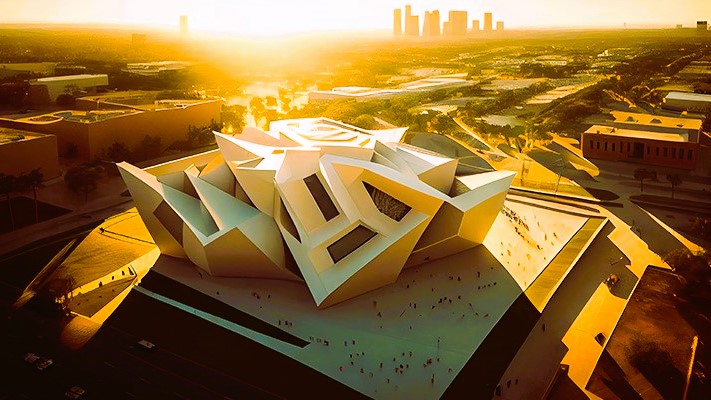The marriage of architecture and technology has always been a dynamic force that continually reshapes city skylines around the world. In today’s rapidly evolving digital age, the fusion of these two disciplines has given rise to unprecedented innovations, transforming the way we design, construct, and experience our built environment. This article explores the symbiotic relationship between architecture and technology, examining how advancements in technology have influenced architectural design and, in turn, how innovative architectural solutions have pushed the boundaries of technological possibilities.
Historical Context
The evolution of architecture and technology is deeply rooted in history, with each era marked by distinct technological advancements that have left an indelible mark on the built environment. From the advent of the industrial revolution to the digital age, the relationship between these two fields has been a constant interplay of inspiration and innovation. Notable examples include the Gothic cathedrals of the Middle Ages, which showcased advancements in structural engineering, and the modernist movement of the 20th century, characterized by minimalist design and the use of new materials like steel and glass.
Contemporary Innovations

In the 21st century, the integration of technology into architectural design has reached unprecedented levels. One of the most notable innovations is the use of Building Information Modeling (BIM), a digital representation of the physical and functional characteristics of a building. BIM enables architects to create accurate 3D models, facilitating better collaboration among stakeholders and streamlining the entire construction process. This technology has not only improved efficiency but has also led to more sustainable and cost-effective building practices.
Additionally, advancements in parametric design have allowed architects to explore complex, organic forms that were once difficult to achieve. Computer algorithms now play a pivotal role in shaping buildings, allowing architects to optimize designs for performance, energy efficiency, and aesthetics simultaneously. This has led to the creation of iconic structures that challenge traditional notions of architectural possibilities.
Smart Cities and Sustainable Architecture
The integration of technology goes beyond the construction phase, extending into the realm of smart cities and sustainable architecture. Smart city initiatives leverage technology to enhance urban living, incorporating features such as smart grids, intelligent transportation systems, and responsive infrastructure. These innovations not only improve the quality of life for residents but also contribute to the overall efficiency and sustainability of urban environments.
In terms of sustainable architecture, technology has played a crucial role in developing environmentally conscious designs. Green building materials, renewable energy solutions, and advanced climate control systems are just a few examples of how architects are incorporating technology to reduce the environmental impact of buildings. The pursuit of LEED (Leadership in Energy and Environmental Design) certification has become a standard in many architectural projects, driving the industry towards a more sustainable future. Did you like the article? We also recommend that you familiarize yourself with Art Deco in the North.
Interactive Architecture and Augmented Reality
As technology continues to advance, architects are exploring new frontiers in interactive architecture and augmented reality. The concept of interactive architecture involves creating environments that respond to human behavior or external stimuli. From kinetic facades that adjust to sunlight to buildings with responsive lighting systems, these innovations redefine the relationship between occupants and their surroundings.

Augmented reality (AR) has also made its mark on architecture, allowing designers and clients to visualize projects in a virtual space. This technology enables stakeholders to experience a building’s design in real-time, making informed decisions about aesthetics and functionality before construction even begins. AR is revolutionizing the design process, fostering greater collaboration and understanding among all parties involved.
The Future of Architecture and Technology
As we look to the future, the relationship between architecture and technology is poised to become even more intertwined. Emerging technologies such as 3D printing, robotics, and artificial intelligence hold the potential to revolutionize the way we conceive, design, and construct buildings. 3D-printed structures, for instance, could drastically reduce construction time and material waste, opening up new possibilities for architectural expression.
The interplay between architecture and technology is a dynamic force that continuously shapes our urban landscapes. From historic marvels to contemporary masterpieces, the evolution of architectural design reflects the advancements in technology and the human quest for innovation. As we stand on the cusp of a new era, it is clear that the future of architecture will be defined by our ability to harness and integrate cutting-edge technologies, creating sustainable, interactive, and visually stunning spaces that capture the spirit of our times.
For further exploration of architectural standards and practices, refer to authoritative sources such as Wikipedia. These platforms provide comprehensive insights into the rich history and current standards shaping the world of architecture.
